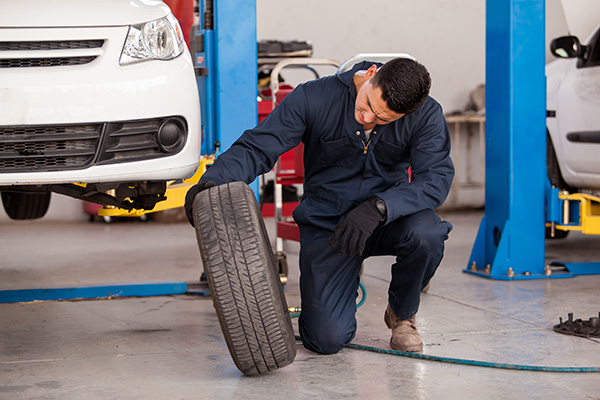
Your tires are the only part of your vehicle that makes direct contact with the road, which means they play a crucial role in safety, handling, and fuel efficiency. Yet, many drivers don’t think about their tires until there’s a visible issue or a flat. Driving on worn-out or damaged tires can increase the risk of blowouts, poor traction, and longer stopping distances, especially in rain or snow.
So, how do you know when it’s time for new tires? There are a few key signs that indicate it’s time to replace them before they become a safety hazard.
Tread Wear
One of the most common ways to tell if your tires need replacing is by checking the tread depth. The tread provides grip, helping your car maintain control in wet, icy, or uneven road conditions. As tires wear down, they lose this grip, making it harder to stop, turn, or maintain stability.
A simple way to check your tire tread is the penny test:
- Insert a penny into the tread groove with Lincoln’s head facing down.
- If you can see the top of Lincoln’s head, your tread is too shallow, and it’s time for new tires.
- If part of his head is still covered, your tread is within a safe range.
Tires should have at least 2/32 of an inch of tread remaining, but if you frequently drive in wet or snowy conditions, it’s better to replace them before they reach that limit.
Cracks, Bulges, and Visible Damage
Tires don’t just wear out from driving—they also degrade over time due to exposure to heat, cold, and UV rays. If you notice cracks in the sidewall, bulging areas, or deep cuts, your tire could be at risk of a blowout.
Common causes of tire damage include:
- Hitting potholes or curbs.
- Driving with underinflated tires can cause uneven wear.
- Extreme temperatures can weaken the rubber over time.
For drivers in Parker, CO, where winter roads and changing seasons can take a toll on tires, it’s especially important to inspect them regularly for damage.
Vibrations and Uneven Wear
If you start to notice your car vibrating at certain speeds or your tires appear to be wearing down unevenly, this could indicate an alignment or suspension problem. Uneven wear can cause handling issues and reduce the lifespan of your tires.
To prevent uneven wear, make sure to:
- Rotate your tires every 5,000 to 7,500 miles.
- Get regular wheel alignments to ensure an even distribution of pressure.
- Check tire pressure monthly, as underinflation or overinflation can cause tires to wear down faster.
Ignoring these warning signs can lead to unsafe driving conditions and a shorter tire lifespan.
Tire Age
Even if your tires look fine, they still age out over time. Most manufacturers recommend replacing tires every six years, regardless of mileage. Rubber degrades naturally, even if you don’t drive often.
You can check your tire’s age by looking at the DOT code on the sidewall. The last four digits represent the week and year the tire was manufactured. For example, if the code reads 1942, the tire was made in the 42nd week of 2019.
Older tires may be more brittle and prone to cracking, even if they still have plenty of tread.
Driving on Worn Tires is a Safety Risk
Worn tires affect braking distances, handling, and overall road safety. If you’re unsure whether your tires need replacing, a quick inspection can save you from dangerous situations on the road.
For those in Parker, CO, where weather conditions can be unpredictable, having reliable tires is especially important to ensure a safe and comfortable ride year-round.
Not sure if your tires are still safe? Let Extreme Auto Repair in Parker, CO, inspect them for wear and damage. Schedule your appointment today!